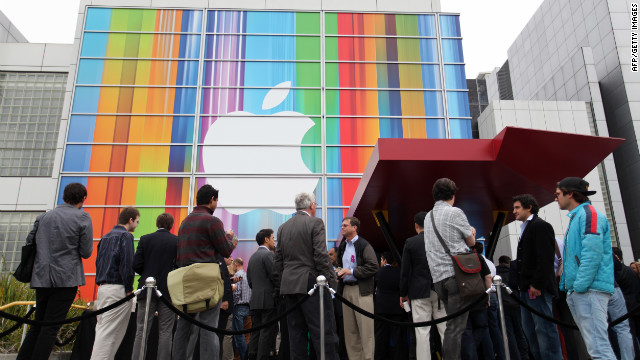
But seriously, Tim Cook, how do you really feel about smaller tablets?
The Apple CEO let loose on 7-inch tablets during a conference call with investors, insisting that the company would never build one. "We would not make a 7-inch tablet," he said today. "We don't think they're good products."
Cook, of course, is staying true to the late Steve Jobs' proclamation that a tablet that's smaller than the original 9.7-inch iPad was too uncomfortable, and that consumers would have to shave off parts of their fingers to actually use it.
But Cook is splitting hairs a bit here. Yes, the recently unveiled iPad Mini is a smaller tablet, but isn't the 7 inch tablet that Jobs referred to. No, it has a staggeringly larger 7.9 inch display instead.
Cook argues that the extra size gives it a much larger viewing area, and isn't cramped like smaller devices such as the Nexus 7 from Google and Kindle Fire HD from Amazon.
The slightly larger size gives the iPad Mini a 35 percent larger display, and more than 50 to 60 percent when considering the usable area (excluding the tabs and other bits of interface on Android tablets), Apple executives say.
To deflect criticism of the lack of pixels on the iPad Mini relative to its competition, Cook said the number of pixels are the same as the iPad 2. As a result, the iPad Mini can run all 275,000 apps designed for the iPad.
Still, the display does lack the key pixel per inch metric that Apple usually touts for its Retina Display-enabled screens. The iPad Mini offers a 163 ppi display, as opposed to 216 ppi each for the Nexus 7 and Kindle Fire HD.
Regardless, the iPad Mini is "in a whole different league," Cook said about the iPad Mini relative to the competition.
Cook defended the premium price of the iPad Mini, which can be significantly higher than the competition. He added that the iPad Mini is significantly less profitable than other products in its lineup.
Apple, meanwhile, sold 14 million iPads in the fiscal fourth quarter that just ended, although it was below what Wall Street had expected. Apple as a whole reported mixed results, including a slight profit shortfall, disappointing iPad sales and higher costs.
The smaller tablets weren't Cook's only targets during the conference call. Microsoft's Surface got a negative shout-out when he compared it to a car that can both float and fly, saying it was a "compromised product" that probably couldn't do either task that well.

 58.31 million iPads sold. Apple let the cat out of the bag on this one at its event earlier this week, noting that it had sold just over 100 million iPads as of the end of its fiscal year, but that it sold more than half that total in 2012. Apple CEO Tim Cook described the tally as "unprecedented," though analysts were expecting the company to sell about 3 million more during its final quarter. Cook and company chalked up the lower-than-expected number to rumors of new models, including the
58.31 million iPads sold. Apple let the cat out of the bag on this one at its event earlier this week, noting that it had sold just over 100 million iPads as of the end of its fiscal year, but that it sold more than half that total in 2012. Apple CEO Tim Cook described the tally as "unprecedented," though analysts were expecting the company to sell about 3 million more during its final quarter. Cook and company chalked up the lower-than-expected number to rumors of new models, including the 

















